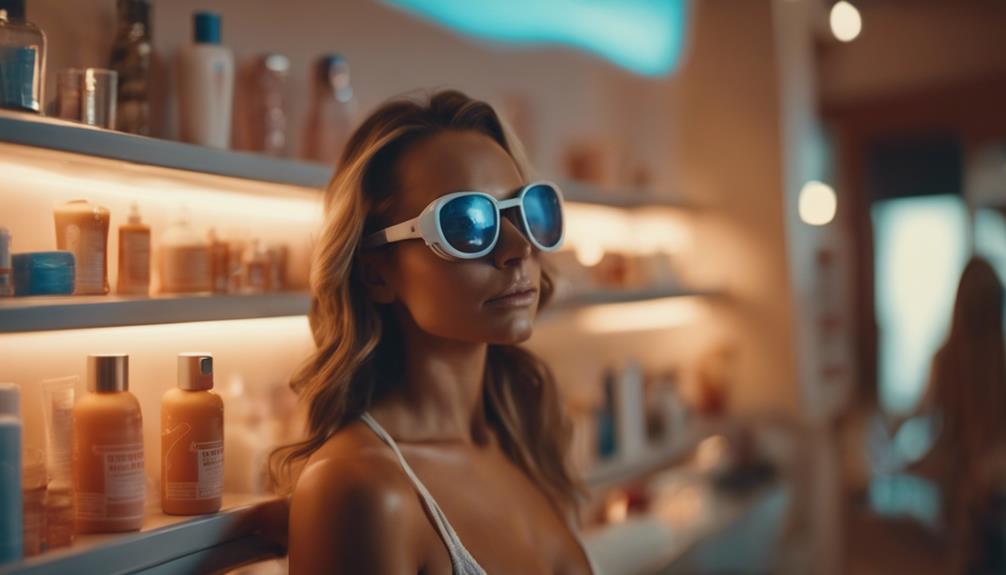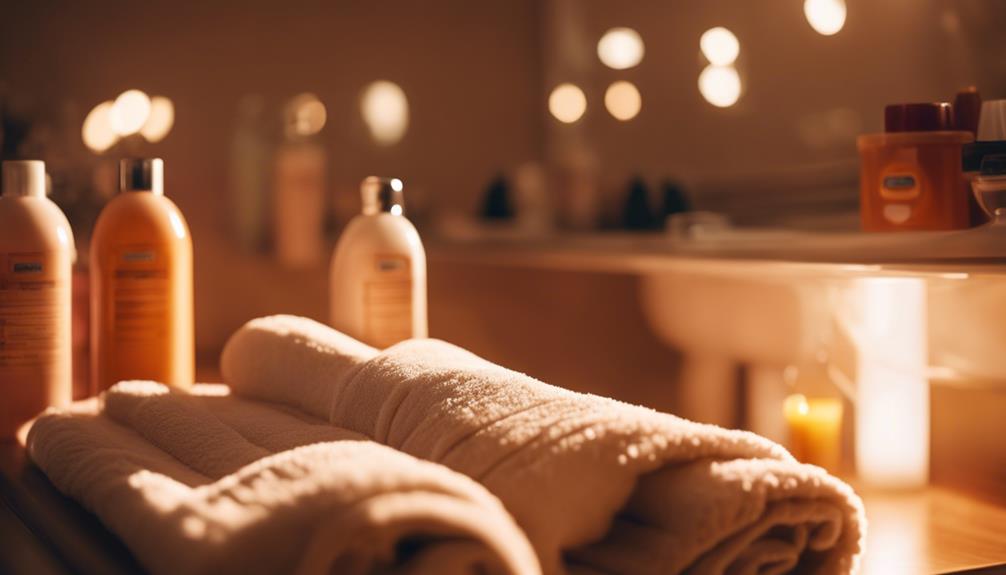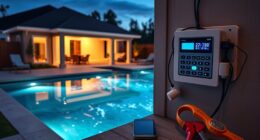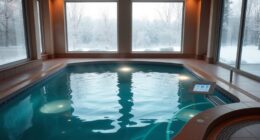To ensure safe use of tanning beds, start by knowing your skin type and following recommended time limits. If you have fair skin, keep your sessions to 5-10 minutes. Always wear UV-blocking goggles for eye protection to prevent injuries. Use a bronzer made for indoor tanning to keep your skin moisturized. After tanning, apply moisturizer to prevent peeling and avoid hot showers immediately. Keeping up with a regular tanning schedule will improve your results, allowing your skin to adjust gradually. With these suggestions, you can enjoy a safe tanning session while letting your glow shine. There’s more to discover!
Key Takeaways
- Limit tanning sessions based on skin type: 5-10 minutes for fair skin and longer for darker skin, adhering to bed specifications.
- Choose bronzer lotions specifically for indoor tanning, focusing on hydration and natural ingredients to avoid orange tint.
- Always wear UV-blocking goggles to protect your eyes, as eye injuries can be serious and are legally required in salons.
- Implement post-tanning care by applying moisturizers to nourish skin and avoid hot showers for at least 24 hours after tanning.
Understand Tanning Time Limits
To achieve a safe and beautiful tan, you need to understand and adhere to the recommended tanning time limits for your skin type and the specific tanning bed you're using.
Start with shorter sessions to gauge how your skin reacts to UV exposure. If you have fair skin, limit your sessions to 5-10 minutes, while those with darker skin can safely increase their time.
Always check the tanning bed's guidelines, as different beds emit varying intensities of UV rays. Stick to a maximum of once a week to give your skin time to recover.
Choose the Right Bronzer Lotion
Selecting the right bronzer lotion considerably enhances your tanning experience and helps achieve a natural-looking glow.
Look for a bronzer specifically designed for indoor tanning that suits your skin type.
Prioritize hydration by choosing lotions with ingredients like aloe or shea butter, which nourish your skin.
Natural bronzers are ideal, as they provide a gradual tan without the orange tint.
Additionally, opt for products enriched with vitamins and antioxidants to boost your skin's health.
Always verify the bronzer is safe for indoor use to prevent damage.
Wear Protective Eyewear

Wearing UV-blocking goggles during your tanning sessions is essential to protect your eyes from harmful rays and prevent potential injuries. Eye safety shouldn't be overlooked; after all, eye injuries account for 6% of tanning-related emergencies.
Protecting your eyes isn't just a good idea—it's legally required in tanning salons. Make it a habit to keep your goggles easily accessible, so you don't forget to put them on before each session.
Long-term exposure to UV rays can lead to serious damage, including cataracts and other vision problems. Prioritize your safety by investing in high-quality protective eyewear.
Implement Post-Tanning Care
Implementing effective post-tanning care is essential for extending your tan and maintaining skin health.
After your tanning session, apply a tan extender or moisturizer to nourish your skin. Look for products with hydrating ingredients like aloe vera or shea butter; they'll help keep your skin soft and prevent peeling.
Avoid hot showers or baths immediately after tanning, as they can strip moisture and diminish your tan. Instead, opt for lukewarm water and gentle cleansers.
Also, steer clear of exfoliating products for at least 24 hours to protect your newly tanned skin.
Finally, consider consulting a skincare professional for personalized advice, especially if you have specific skin concerns.
Taking these steps guarantees your tan lasts longer and your skin remains healthy.
Maintain a Consistent Routine
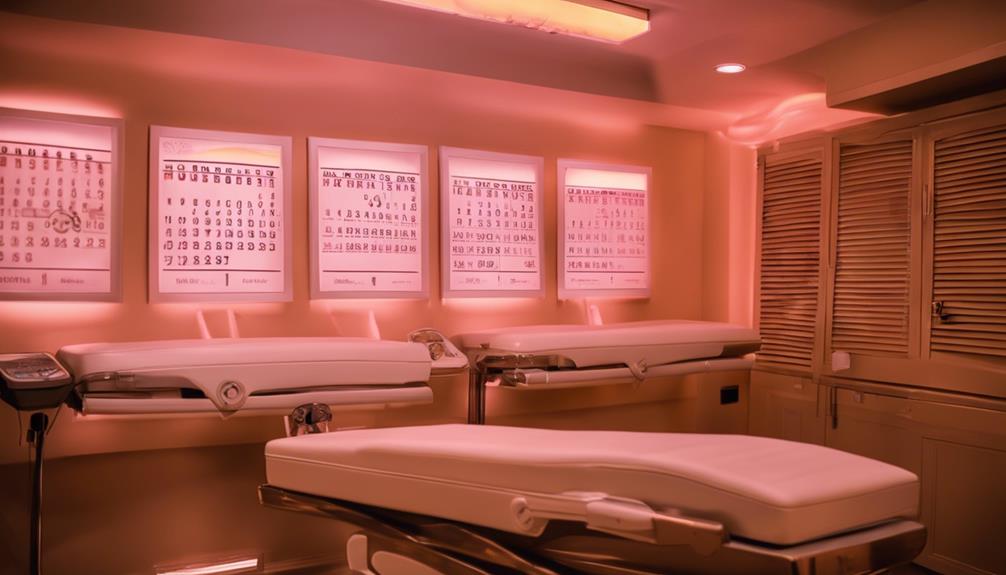
To achieve the best tanning results, it's crucial to stick to a consistent routine that includes regular sessions and proper skincare practices. By maintaining this routine, you'll enhance your tan while minimizing skin damage.
Schedule tanning sessions at the same time each week for consistency.
Gradually increase your tanning duration based on your skin's response.
Always apply a quality bronzer lotion before each session for ideal results.
Make sure to follow post-tanning care to prolong your glow.
Consistency not only helps you achieve a deeper, more even tan but also allows your skin to adapt safely to UV exposure.
Stick to your routine, and you'll enjoy the benefits of a beautiful tan while keeping your skin healthy!
Frequently Asked Questions
How Often Should I Clean My Tanning Bed?
You should clean your tanning bed after each use to maintain hygiene. Regular cleaning prevents the buildup of germs and enhances your tanning experience, ensuring a safe and pleasant environment every time you tan.
Can I Tan if I Have Sensitive Skin?
You might worry that sensitive skin can't tan, but you can achieve a glow safely. Start with short sessions, use gentle products, and always protect your skin to enjoy a beautiful tan without irritation.
What Should I Do if I Burn During Tanning?
If you burn during tanning, stop tanning immediately. Apply soothing aloe vera or a cool compress to the affected area. Stay hydrated, avoid further sun exposure, and give your skin time to heal properly.
Are There Any Foods That Enhance Tanning Results?
Imagine munching on sun-kissed fruits like watermelon and carrots, boosting your tan! These foods can enhance melanin production, giving you a radiant glow. So, enjoy them while you work on that perfect bronze!
How Do I Choose the Right Tanning Salon?
When choosing a tanning salon, look for cleanliness, knowledgeable staff, and well-maintained equipment. Check reviews, ask about their safety protocols, and make certain they offer options suitable for your skin type and tanning goals.
Are there any specific safety tips for using a tanning bed that are different from general tanning safety tips?
When using a tanning bed, there are essential tanning bed tips to follow for safety. Unlike general tanning, goggles are crucial for protecting your eyes from UV rays. It’s also important to limit your sessions to prevent burns and overexposure. Moisturizing before and after can help maintain healthy skin.
Are the Essential Tips for Safe Tanning Bed Use the Same for both Indoor and Outdoor Tanning?
When it comes to essential tanning bed safety tips, they are also important for outdoor tanning. Applying sunscreen, avoiding peak sun hours, and staying hydrated are crucial for both methods of tanning. Using eye protection and monitoring the time spent tanning are key for safe indoor and outdoor tanning.
Can the tips for safe tanning bed use apply to both indoor and outdoor tanning?
When it comes to safe tanning, essential tanning bed tips can be applied to both indoor and outdoor tanning. It’s important to always wear sunscreen, limit your time in the sun, and avoid peak UV hours. Additionally, using protective eyewear and moisturizing regularly can help maintain healthy skin while tanning.
Conclusion
By following these essential tips, you'll be on your way to achieving the golden glow of a sun-kissed goddess without turning your skin into a leather handbag!
Picture yourself stepping out with a radiant tan that makes everyone stop and stare, while your skin stays healthy and happy.
So, embrace the process, stay safe, and watch as you transform into a bronzed beauty that shines brighter than the sun itself!
Your dreamy tan awaits!

